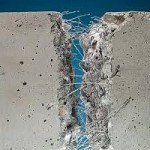What is fiber reinforced concrete and its types
Plain cement concrete has very limited ductility, resistance to cracking and low tensile strength. Plain cement concrete may develop micro cracks even before load is applied. If uniformly distributed and closed spaced fibbers introduced in plain cement concrete many properties of plain concrete gets improved.
Fiber reinforced concrete may be define as a composite material constitute of cement + aggregates (course and fine) and uniformly distributed fibers.
Properties of fiber reinforced concrete are affected by
1. Volume of fibers’ in mix
2. Relative fibers matrix stiffness
3. Aspect ratio of fibers (Aspect ratio of fiber = length of fibers / Diameter of fibbers)
4. Orientation of fibers’
Types of fibers reinforced concrete
Steel fiber reinforced concrete (SFRC):
As name suggests, steel fibers’ are mixed with concrete. Aspect ratio of steel fibers’ is between 30 – 250. Diameter of steel fibers’ used varies between 0.25 mm to 0.75 mm. Hooks are provided at the end to provide better bonding.
The advantage of using steel fibers’ are improvement in tensile as well as compressive strength. Resistance to impact and shrinkage.
Improvement in toughness and durability. Steel fiber reinforced concrete is now widely used in cane lining, industrial floors, airport pavements, heavy duty chamber covers.
Polypropylene fiber reinforced concrete (PFRC):
Polypropylene fiber are cheap and easily available in the market. Polypropylene fibers are having properties like high chemical resistance, high melting point, low modulus of elasticity. The main application of Polypropylene fiber reinforced concrete is in cladding panel and shortcrete.
Glass fiber reinforced concrete (GFRC):
Glass fiber is having high tensile strength about 1000 to 4000 N / mm2. Generally about 20 – 25 mm length glass fibers’ are used. Glass fibers’ considerably improves strength of concrete. In addition, glass fibers’ improves properties like flexural strength ductility and resistance to thermal shock.
Natural Fiber (organic fibers’) Reinforced Concrete:
Historically, fiber-reinforced concrete have used natural fibers’, such as hay, jute, coir or hair. Though these fibers’ improves strength of concrete, it makes concrete weaker also if extensively used. In addition if the natural fibers’ are rotting when they are mixed in then the rot can continue while in the concrete. This eventually leads to the concrete crumbling from the inside, which is why natural fibers’ are no longer used in construction.

